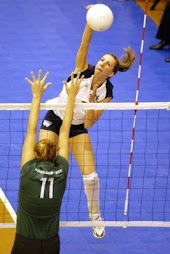Well, where do muscle pulls come from? There is counting evidence that they don't come from "not stretching before practice." They do come from improper warm ups, but they can also come from muscular imbalances and general inflexibility in certain muscle groups. There is a lot of research coming out against pre-practice stretching and the physiology involved. Here is a great article (amongst many) further illustrating this based on previous research: http://www.nytimes.com/2008/11/02/sports/playmagazine/112pewarm.html?_r=3&oref=slogin
So instead of stretching, why not use this time to go through a skill warm up involving the required movements of your sport or activity? Research has shown that movement is what is important for a proper warm up. In volleyball, I like to run my teams through a dynamic fitness warm up involving both strengthening movements (different combinations of dynamic movements, push-ups, squats, jumping, core strength, etc) in conjunction with skill movements, technical activities and footwork that will reinforce the techniques and movement patterns we want from our players.
This can be applicable to all sports. If you are a basketball player, use dribbling and shooting sequences to start moving around rather than stretching. Lacrosse? Pass and shoot and work on technique as you warm up. Swimming? Go through the proper arm motion before getting in the water. Same thing with water polo. This goes on and on for all sports.
This is further evidenced with strength training. You wouldn't go in right away, stretch, then and try to bench press, squat, clean, etc. a heavy amount without first building up to it or doing several warm-up sets.
So not only will a dynamic skill warm-up specifically warm up your athletes, but it also gives you, as the coach, way more opportunities to respond on technical correction. The best time to reinforce technical corrections is early on in practice as the athletes minds are fresh and most able to absorb information and feedback given to them.
The best time to stretch is after practice. This allows the lactic acid build up in the muscles to clear up quicker, improving recovery time and, because the muscles are already warmed up, it gives the athlete an opportunity to now work on flexibility. It is also a more relaxed time to reflect on his or her performance during practice, allows much needed team bonding time, and an opportunity for both the coaches and players to give feedback on practice as well.
.jpg)






No comments:
Post a Comment